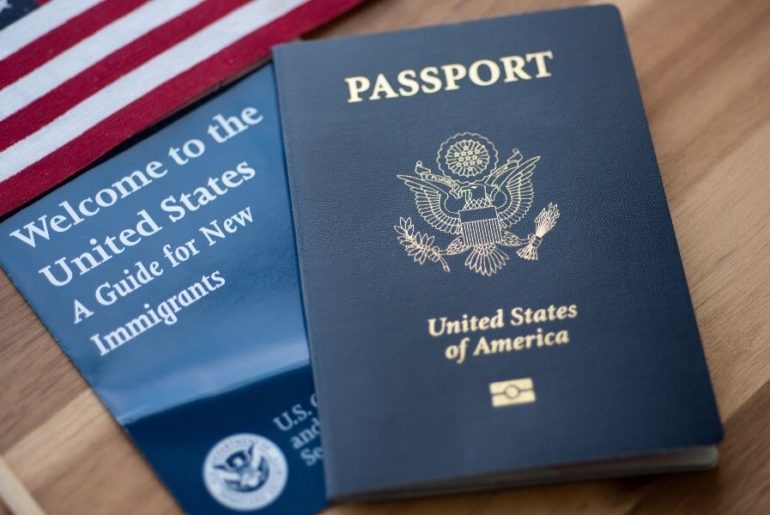Rutilia Ornels waited 20 years to apply for naturalization in the U.S.. After two decades of being a permanent resident, the 65-year-old Mexican immigrant decided to go through with her naturalization process in hopes of casting her vote in the 2020 Presidential Election. Sadly, she would not be able to do so when the time came.
“I decided to become a citizen for my voice to count and for the Latinos and all the minorities to be counted, and to be one more in this country,” Ornelas told the Washington Post. “I feel very disappointed because I was so looking forward to becoming a citizen for this election for November. I feel like my voice is not going to count.”
Ornelas, like thousands of immigrants, was caught in the dreaded backlog that the U.S. Citizen and Immigrantion Services (USCIS) has been experiencing. Wait times have worsened due to the coronavirus pandemic as well as the budget shortfalls and policy changes by the Trump administration.
What the Backlog Means for Immigrants
Back in March, citizenship ceremonies across the nation were cancelled due to safety measures because of the coronavirus pandemic. Now, even though the ceremonies have resumed, slowing citizenship case approvals are beginning to happen again. Part of the reason for these slow downs is because of the rising coronavirus infections in the country, but the other reason is the anti-immigrantion policies that the Trump administration has rolled out.
These policies scrutinize citizenship applicants in a way that they weren’t before, meaning that the process takes substantially longer because of all of the reviews now required. Immigrant organizations believe that this increased reviews will make the 700,0000 existing backlog swell in the next couple of months.
“The backlog right now under the Trump administration is extraordinary,” Sarah Pierce, policy analyst for the U.S. Immigration Policy Program at the nonpartisan think tank Migration Policy Institute, told the Post.
According to the government, average processing waits were eight months prior to the pandemic even though several years ago, it was just six months.
Now, application processing in major cities such as Dallas, Houston, Los Angeles, San Francisco, New York and Miami takes between 12 months and three years. In Chicago, the wait is 13 months to four years, according to the USCIS website.
“I was really eager to cast my very first ballot this important electoral year, where there’s so much happening from local to national,” Laura Muñoz, a Colombian immigrant whose application has also been delayed, told the Post. “After you call this your country for so many years, you’re still not a part of its democracy. I speak for many people when I say that feels really hurtful.”
The naturalization process in itself is straightforward, but there are a few steps before being able to take the Oath of Allegiance and becoming a U.S. citizen.
Once you are 90 days away from completing your required time as a permanent resident (5 years for most for 3 if you applied through your spouse), you need to submit the Application for Naturalization form, along with the required documents. From there, some people are required to take a Biometrics test, and after that, you just wait for your interview.
After the interview you will take the naturalization test, which includes the civics test and the English test. If you are approved, you are then scheduled for your citizenship ceremony. However, waiting times is not the only thing that changed this year – the test was also updated.
The Civics Test
As of December 1, 2020, the naturalization test also changed. From time to time, the USCIS reviews and updates the content of the civics portion of the test, generally to update its content. Common changes to the previously 100 question test might include the names of the president and vice president, senators, representatives and governors, and other questions that change through time.
This year, a bit more changed on the test. Previously, to pass the civics test, you had to get 6 out of 10 questions right. However, the new test requires applicants to get 12 of the 20 questions correctly in order to pass. The old citizenship test had 100 questions to choose from and the new one contains 128 questions. Officers ask each person 20 questions now instead of the previous 10 questions, chosen from the list of 128 questions.
“USCIS revised the civics test as part of a decennial update to ensure that it remains an instrument that comprehensively assess applicants’ knowledge of American history, government and civic values,” a USCIS statement said.
Tips for the Test
Here are a couple of tips if you and your family are about to present the citizenship test:
- Use the USCIS Resources: The USCIS webpage has many resources to help you study for the exam portion, including a practice test. It also had a complete handbook, in both English and Spanish, that you can use to study the 128 questions.
- Provide updated documentation. When it is time to take your test, you will have to submit all the required documents before your interview. However, it is very important to not only keep your documents up to date, but also have your own copy of updated documents in case they ask to see them during the interview.
- Keep up to date with federal and state news: Some of the answers to certain questions of the test (like “who is the vice president” or “who is the governor in your state”) may change from the moment you apply to the date of your interview. That is why you have to keep yourself updated with this kind of news so you can provide a correct and current answer when the time comes.

